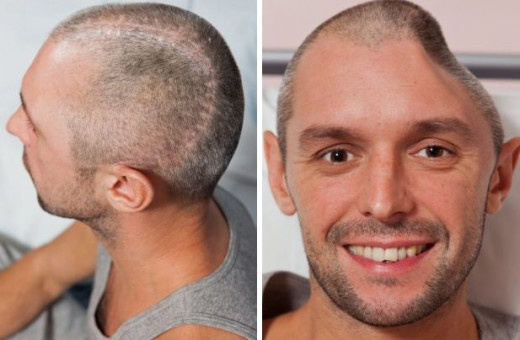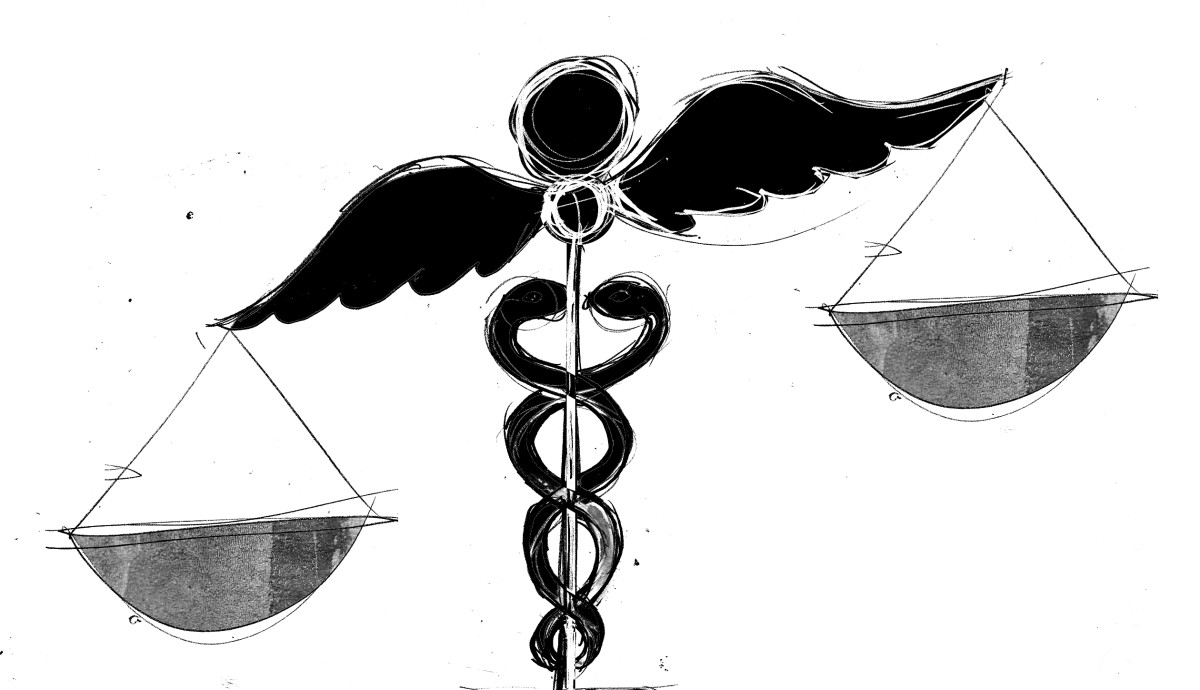All Medical Professionals must Know their Legal Rights. (A Case Study)
Everything is not always coming up roses

Know your rights
Common Sense Advice for all Medical Professionals. Know Your Legal Rights. (A Case Study)
Are male nurses more self confident and better suited for nursing?
Always know your legal rights before you practice nursing.
Understanding the laws, your limitations, and you responsibilities are imperative to survival in this field.
A case study:
A must read for all practicing nurses and nursing students.
Learn your rights, responsibilities, and liabilities before practicing.
you alone, are the first line of defense in the protection of your own unique life experiences.
d.william, RNS.
Better communication skills
Lack of Communication
The major problems arising from the lack of communication in the Medical Profession.
This is a true case study.
The names have been changed to protect the privacy of those involved.
On February 4th, 1980, the physicians held an emergency executive board meeting at my place of employment to discuss subsequent actions taken by one the the charge nurses at the Medical center.
They voted unanimously to bring charges of "deliberate obstruction and 'disobeyance' of a direct physician's order" with the recommendations of "the severest and immediate disciplinary action - dismissal. With possible charges to be filed with the state board of licensure calling for license revocation".
The events that led up to this day were a result of nothing more than a simple lack of communications of all disciplines involved in the total care of one patient; complicated by a physician who sees himself as the ultimate unquestionable authority, and a nurse who feels that there are no "gods among men" and that a patient's welfare always comes before all else, and especially before the pride of the physician.
Head Trauma

The Event
The patient (a 38 year old, white male) was admitted to the unit post surgery for brain trauma with a 4 inch diameter piece of skull bone absent from the left side of his head.
His behavior was typical post-operative behavior for this type of surgery, but also typical of psychosis without surgery or trauma, of which, he had no history.
He was a 6 foot, 2 inch man with good muscular build. The first impression of this looming figure as somewhat unnerving, is agreed; and unfortunately the basis for the physician's first orders for medications and the beginning of the end for this patient.
The order called for Haldol ( a medication generally used to control severely agitated manic states in schizophrenia and in manic-depressive psychosis).
The nurse questioned the suitability of its use in this particular case. The physician insisted without explanation and the order stood.
This nurse refused to administer the drug without justification for its order and charted so in the nurses notes of the patient's chart.
On the following shift, the medication nurse, following the doctor's order, administered the medication.
The psychotic symptoms increased; consequently, the dosage was increased by a physician covering that unit, who was not familiar with this particular patient.
The following day the medication was withheld by the nurse in charge, with explanations given to the physician and recorded properly in the patient's chart.
The symptoms subsided.
This situation repeated itself for three consecutive days.
- God Syndrome | Psychology Today
Why do doctors think they are God? By Dr. Nassir Ghaemi...
The physicians response
The doctor refused to admit that perhaps the medication was having a reverse effect (as psychotic medications are known to do if administered to a non-psychotic patient).
He instead called a psychiatric consultant to confirm his order for the medication, and explained that it was requested after the charge nurse questioned its use. Which he (the psychiatrist) readily did at the request of the attending physician.
The nurse stood fast and it became apparent to all shifts that the patient was having reverse effects from this medication and it was subsequently withheld by ALL nurses, and recorded properly in the patient's nursing notes.
After another week passed without the medication, and without incident, a conscientious nurse, who was floated to cover this unit, discovered this "error" of an order that was not being carried out and without reading the nurses notes administered the drug.
The symptoms returned more severely than before, so the nurse called the doctor covering, who increased the medication dosage with dire consequences.
The following morning, the nurse in charge finding the patient stuporous and in restraints, contacted the attending physician immediately and insisted that this order be rescinded.
The doctor refused to concede and contended that he was not to be questioned again as he was "covered legally" by virtue of confirmation via the psychiatric consultation.
He re-ordered the psychiatric consultation to re-confirm his order.
The consultation read:
"Please re-examine this patient manifesting psychotic behavior to re-evaluate the necessity for continued treatment with present medication ordered. He has displayed bizarre behavior and admitted to hallucinations both visual and auditory in the past week."
The psychiatrist saw the patient and re-confirmed the order. The doctors stood fast in their judgement.
The nurse refused to administer the medication without justification of its use.
The doctor, realizing his fruitless effort to maintain control over the nurse, decided to transfer the patient to the psychiatric unit for treatment there.
The nurse pointed out that due to the violent behavior of some of the patients on that unit, this patient is at great risk of sustaining trauma to the unprotected portion of the brain.
The doctor ordered a helmet for the patient to protect himself (the doctor) if such an event should occur.
The nurse refused to transfer the patient, contending that the behavior was consistent with post-op brain surgery and that labeling this patient as psychotic was unjust and unfounded.
He cancelled the order for transfer for fear that if anything happened to this patient he would be held liable because of the nurse's notes stating the reason the transfer was not carried out.
- Doctors, Nurses, and the Ethics of Bullying | The Nursing Ethics Blog
Bullying, or even subtler forms of interpersonal conflict, can be common in any kind of workplace. But it's particularly corrosive, and dangerous, in healthcare settings, where effective teamwork really can make the difference between life and death.
A Physician's retaliation
Three weeks later, on a Friday, at 4:00 P.M. , the attending physician, psychiatrist, and clinical director met and decided the situation with the nurses, [in their opinion], was out of control and committed the patient to the Institute of Mental Health with a diagnosis of psychosis to be transported STAT (immediately) to that unit for treatment with anti-psychotic medications.
The first shift ends at 3:30 P.M. and it was their belief that all first shift personnel had left for the day.
The first shift nurse in charge of the unit had been detained unwittingly by the family of another patient.
- Love as Therapy | Soren Dreier
Nothing heals better emotionally, biochemically, physically and mentally than love - or experiencing the frequency of romantic love as all is frequency. It is
The family intervention
Upon discovery of the physicians' attempt to transfer; and coincidental visit by the patient's family, the following resulted:
the patient's parents did not want their son committed and spoke to the medical director who told him he had no say in the matter as it was the professional opinion of his attending physician, and discussion was closed on the matter.
The nurse called the Nurses' Union lawyer for advice; who spoke to the parents and told him to take his son home with him. The patient was now self care, alert, responsive and displayed "normal non aggressive behavior". So the family took him home. The discharging physician had them sign the form: "discharged against medical advice" to cover themselves if anything happened to this patient at home.
The Reprimand
The weekend passed uneventfully. Monday afternoon (2/4/1980) the Charge Nurse was summoned to answer charges of insubordination, deliberate and unwarranted interference with a direct doctor's order, and 'unprofessional behavior'.
The nurse, with a lawyer [union representative], met with the nursing supervisor, the director of nursing, and several administration members present, offered this committee, [along with the corresponding nurses notes], an explanation based on the legality of the 'professional judgement' of a registered nurse.
The following letter resulted:
TO: (the the medical doctor serving as Assistant Chief of Medical Services).
FROM: (the superintendent of nurses).
SUBJECT: Investigation of Incident RE: Patient (D.F.) on 2/1/1980.
Following your telephone call Monday, February 4, 1980, concerning this incident, a meeting of all involved nursing personnel was convened in the Nursing Office.
Also present was Mr. R. (Nurses union attorney) observing at the request of the RN involved.
The RN was asked to explain his involvement concerning patient, D.F., and the signing of Discharge AMA (against medical advice) by patient of Friday, February 1, 1980.
The RN states that the patients father, did not want his son transferred to the Institute of Mental Health.
Therefore, The RN, explained to the father that the patient could go home "Against Medical Advice", at his own risk.
It was pointed out to (the RN) that another option was available, that of the Patient Advocate.
If the charge nurse had directed his concern to the Nursing Office as he should have, this advice would have been given.
In addition, the night duty physician would have been called to physically see and assess the patient, and his family members, regarding this situation.
Nursing office, while acknowledging the mandate of a legally written physician's order, recognizes the right of a licensed nurse to express appropriately one's concerns when conflict arises.
The investigation of this office pointed to the inappropriateness of the action taken by (the RN in charge).
This letter therefore documents that (the RN) has been so counseled in the presence of his union representative.
SIGNED: (The Superintendent of Nurses)
Improving communication skills
- How To Improve Your Communication Skills For Healthier Relationships
Learn ten simple therapist-recommended communication skills, manage conflict in a respectful way, and build healthier relationships. Free tests and e-course.
The physicians' charges against a nurse
Feeling empowered by the letter written by the Director of Nurses; on February 14, 1980, the medical team held another emergency meeting of the executive board and decided to file charges as, a unit, against this nurse and the nurse was so informed that unless voluntary termination was rendered, action would be taken, post haste.
The RN's lawyer was contacted. This RN was well versed in the state laws governing the activities of Nurses, and through multiple discussions with the state Nursing Board of licensure, knew full well that it is within the legal realm, as well as, the law's expectations of a Nurse's intervention in any care that may be harmful to the patient.
At the behest of the RN, he (the union lawyer) contacted administration and suggested that ".... suit be filed legally and differences would be settled in court, as proper documentation would justify actions and undoubtedly prove negligence, malpractice, collusion and slander on the part of the physicians involved".
On February 18, 1980, the physicians' executive board agreed that :
"....perhaps we've been too hasty in our decision to prosecute and have agreed it would not be in the best interest of this institution to pursue the matter, however, we still agree as unresolved, the right of ANY nurse to question and deliberately disobey a direct physician's order. Incident concluded".
- My Life As A Male Nurse. Turning down a Promotion.
Do males really have a better chance for advancement in the nursing fields? Men are generally more assertive, more self confident, and will never require pregnancy leaves.
The Conclusion
In summary, the following transpired regarding persons involved, the roles they played, their attitudes, the direct patient contact, and time spent with the patient, within a four week period.
- Nursing aides (direct personal care - supportive of nurse): 672 hours
- Nurse 3 shift/day (first priority: the patient): 336 hours
- Sociologist (supportive - family, patient, nursing: 5 hours
- Psychologist (ambiguous - supported no one): 2 hours
- Attending physician (negligent - self serving) (less than 5min/day= less than 1 hr total)
- Psychiatrist (influenced by consult request): less than 20 minutes reviewing charts
- Medical director (protector of physicians): Never saw patient
- Director of Nursing (supportive of nurses judgements) Never saw patient
- Parents (main concern - patients well being. supportive of RN): around the clock
- Hospital Administrator (realistic concern for hospital's image) Never saw patient, never spoke with the nurse or the patient's family
- Lawyer (main concern - legal implications) Never saw patient
- Union Representative (supportive of nurses rights) Never saw patient
The immediateness of this incident is over, but its implications remain unresolved:
- The doctor remains unchallenged.
- The nurse remains defensive in all aspects of subsequent patients' care under this physician.
- The psychiatrist remains resentful toward this nurse for the position he was place in and being forced choose sides.
- The Director of Nurses sees this as a small step forward in the recognition of the validity of the nurses' professional judgements.
- The hospital administrator sees this as a forerunner of potential problems, with nurses randomly questioning their medical care.
- The sociologist sees this as a victory in saving an individual from the system.
- The lawyer sees this as a missed opportunity for a precedent setting court case.
- The parents are elated that someone had courage enough to stand against the establishment in defense of their son's welfare.
- The patient presently resides at the VA hospital (at the time of this case study). Without medications. Showing great Improvement and enrolled in carpentry as a rehabilitative tool and well on the road to complete recovery.
The ideal situation would (should) have been:
upon admission, all disciplines involved should have realized that the patient is the center of the health care team, which includes doctors, nurses, physical therapists, occupational therapists, social services, nurses aides, and others..., and a care plan formulated with appropriate input from each discipline.
It is apparent that status distinctions, [that any job title implies], imposes specific deleterious effects, especially in the field of medical care.
This RN continues to maintain that "Status distinctions sometimes make us forget that many different kinds of work are necessary to the smooth functioning of our total society.
These 'distinctions' tend to separate us, and only add to existing professional, and political, tensions.
Every single job is to be considered as important as the rest of them, for without any one of those job titles there would be something missing in the fluency of therapeutic care that can only lead to chaos instead of order.
The enclosed letter from the director of nursing, regarding this incident, is a prime example.
When questioned about her reasons for stating that "this RN has been counseled", the nursing administrator said:
".......this is NOT a letter of reprimand, nor of counseling, per se, as stated under the terms of the contract on discipline; but simply used as a tool for allowing the physicians an opportunity to "save face" for which you allowed very little (opportunity)".
Hopefully the future will not reiterate the events that led to this incident and all steps to insure prevention will be taken by this nurse, that is, by following proper channels and passing responsibility to superiors, when appropriate.
However, should it arise, there cannot be any doubt that there will be no retreat from the situation, as it is the responsibility of the RN to insure proper care of their patients.
It would appear that the higher a person is in the status ranks the less likely they feel the need to allow an opponent an opportunity to "save face" even though it may be in the best interest of the company or organization as a whole.
Unfortunately, there is no easy solution to any confrontation, and without the real desire to understand the other person's point of view, conflict can never be avoided or resolved.
Since the most important factor in any good communication is the desire to amicably resolve problems, this should be initiated and stressed throughout each employee's orientation program.
by d.william 08/04/2011
Importance of Communication
© 2011 d.william








